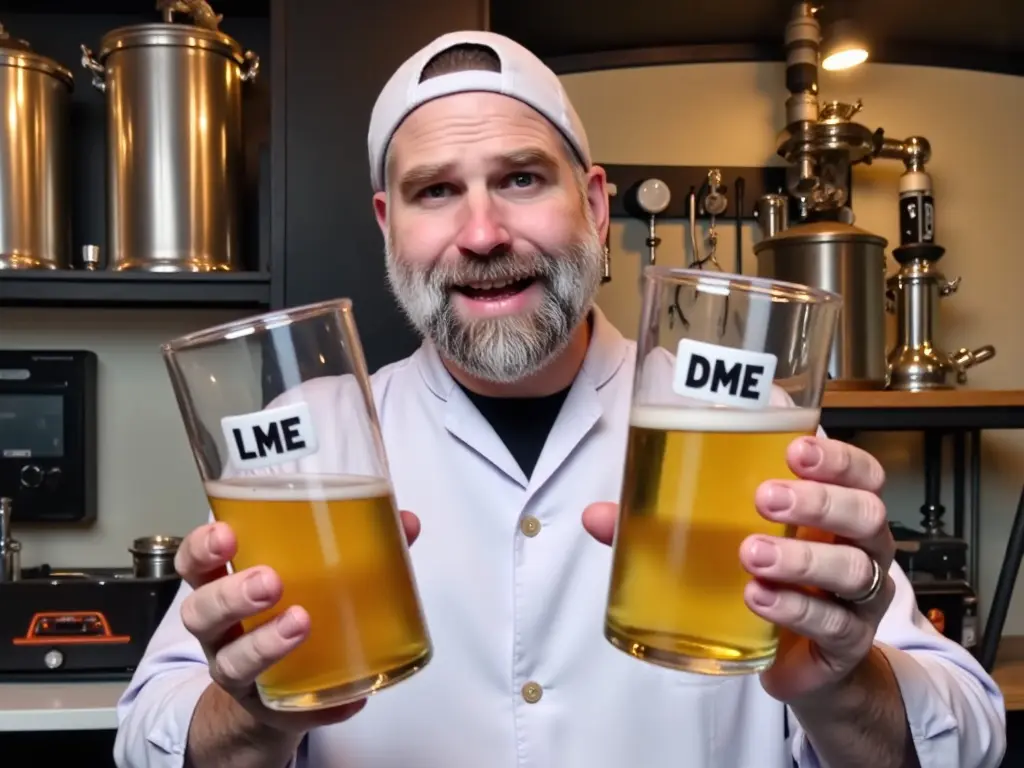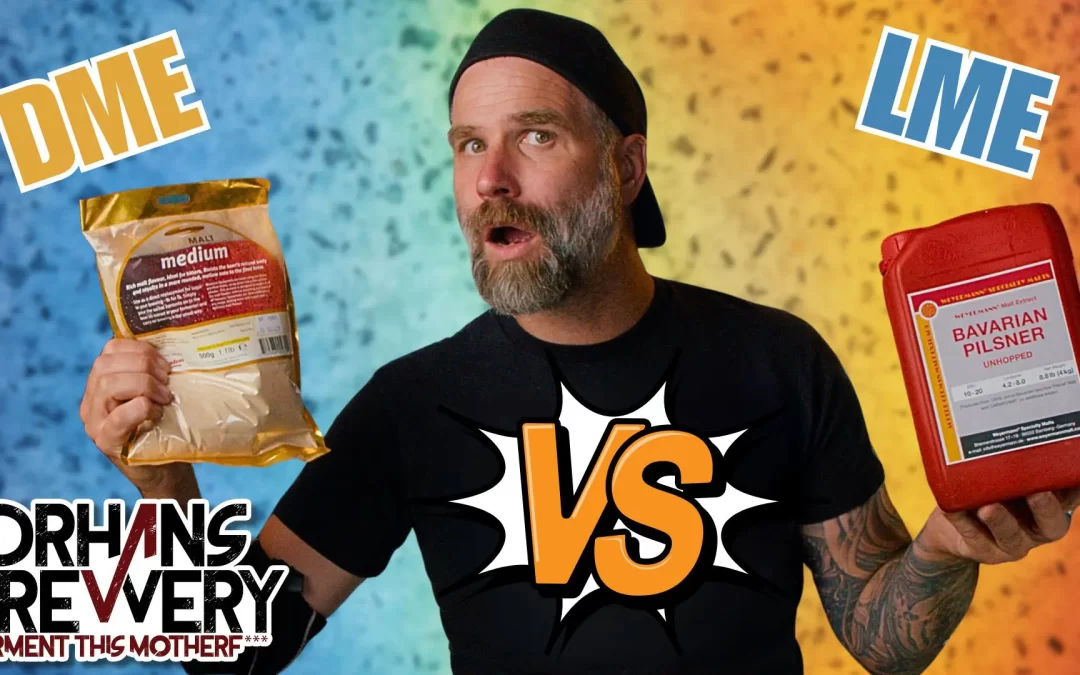LME vs. DME: Which Malt Extract Should You Choose for Your Homebrew?
Introduction:
In homebrewing, one of the most common decisions extracts brewers face is whether to use Liquid Malt Extract (LME) or Dry Malt Extract (DME). Both offer time-saving advantages, but how do they compare in the final product? In this post, I’ll walk you through a brewing experiment where I used both LME and DME to create identical beers and see how they measure up. Special shout-out to Angel Yeast for sponsoring this experiment with their amazing BF27 Lager Yeast and BrewNutri-Z Yeast Nutrients, which helped ensure a smooth fermentation process. You can check out their brewing products here.
What Are LME and DME?
Both LME (Liquid Malt Extract) and DME (Dry Malt Extract) are concentrated forms of wort, providing sugars for fermentation. They allow homebrewers to skip the mashing process, making brewing faster and requiring less equipment.
- LME (Liquid Malt Extract): A syrupy concentrate with around 20% water content.
- DME (Dry Malt Extract): A powdered extract that is more shelf-stable and easier to store.

The Experiment: Brewing with LME and DME
To put both extracts to the test, I brewed two Pilsners using Angel Yeast’s BF27 Lager Yeast and added BrewNutri-Z Yeast Nutrients to ensure a healthy fermentation. Both beers were brewed under the same conditions, with one batch using LME and the other using DME. Interestingly, despite popular belief, there was no difference in color between the two final beers.
Head Retention and Carbonation
The DME beer had slightly better head retention, which I attribute to a small difference in carbonation rather than the malt extract itself. This is something worth noting when comparing the two.

The Taste Test: LME vs. DME
To my surprise, the DME beer had a maltier flavor compared to the LME version. Both beers were crisp, but the flavor differences were subtle:
- DME Beer: Richer, maltier taste, with slightly better head retention.
- LME Beer: Clean and crisp with a lighter malt profile.
The Verdict: Should You Use LME or DME?
Both LME and DME produced excellent beers in this experiment, so which one is better depends on the style of beer you’re brewing. If you want a maltier, richer beer, you might prefer DME. If you’re after something crisper, LME could be the better choice.
Download the Recipes!
If you’d like to try these recipes for yourself, you can download both on my Buy Me A Beer page here. I’ve provided detailed instructions and tips for brewing with either LME or DME, so you can see the difference firsthand.

Tips for Using LME and DME in Your Brewing
- Beginners: Both extracts simplify the brewing process, making them ideal for first-time brewers or those without extensive equipment.
- All-Grain Brewers: LME and DME can be used to adjust gravity or tweak recipes, providing a versatile tool even for experienced brewers.
Conclusion: My Personal Takeaways
This experiment showed me that brewing is full of surprises. While I expected the LME beer to be maltier, the DME brew ended up having the richer flavor. Both beers turned out great, thanks in part to Angel Yeast’s high-quality yeast and nutrients, which ensured smooth fermentation. I highly recommend giving both LME and DME a try in your next brew!
Social Media and Contact Information: Instagram: @drhansbrewery
Facebook: @drhansbrewery
Webpage: https://drhansbrewery.com
Contact Email: drhansbrewery@gmail.com
Support and Merchandise Links: 📚 Learn the art of homebrewing alongside me: https://solo.to/drhansbrewery
🛒 Check out the gear I use on Amazon: http://bit.ly/drhanssf
📘 FREE brewing ebook on my website: http://bit.ly/DrHans
💰 Buy me a virtual beer! https://bit.ly/ByMEaBEER 🍻
Support me on Patreon from just $2/month: https://bit.ly/2V5Zsgz
👕 Get my merch! Exclusive items at: https://bit.ly/DrHans-Merch



Recent Comments